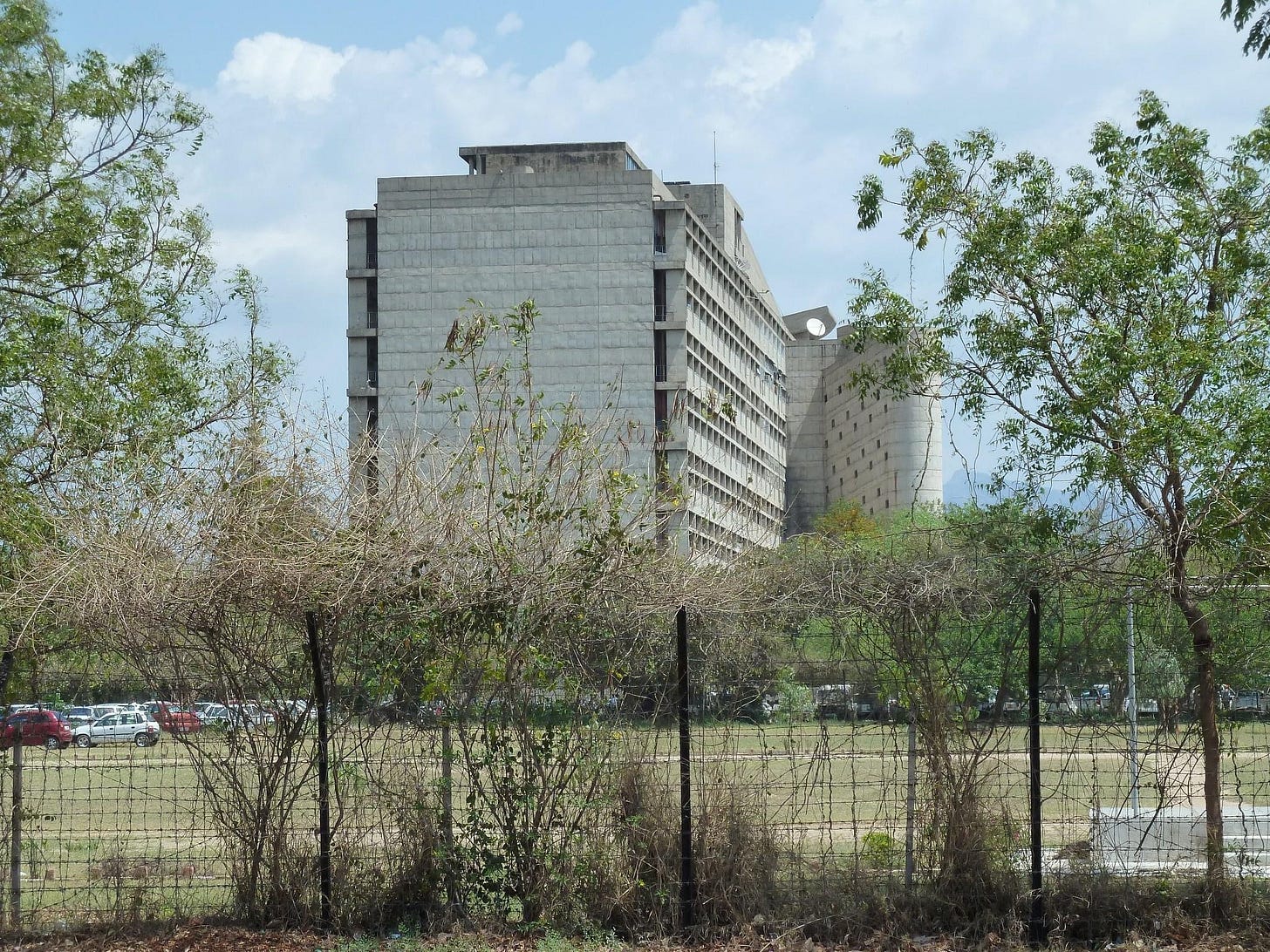The Drug Problem in Contemporary Punjab: Unravelling Harsh Realities and Seeking Solutions
Unyielding Efforts amidst Escalating Challenges: Addressing the Alarming Surge of Drug Addiction, Pending NDPS Cases, and Illegal Drug Infiltration in Contemporary Punjab.
Introduction: The border Indian state of Punjab has been grappling with a serious drug problem that has had severe consequences for its society and youth, apart from its fragile economy. This rudimentary article aims to shed some light on the extent of the problem, dissect its underlying causes, explore the efforts made to tackle it, and propose potential solutions. By analyzing statistics and contrasting perception with reality, we can develop a fairly comprehensive understanding of the drug crisis that is plaguing Punjab today.
Dimensions of the Drug Problem in Punjab
The Extent of the Problem: Statistics and Reality versus Perception:
According to official statistics (see footnote), Punjab has witnessed a steady increase in drug abuse cases in the past decade. As per the latest available figures, there were a staggering 25,000 pending Narcotic Drugs and Psychotropic Substances (NDPS) cases in the state, highlighting the gravity of the issue. On the other hand, it has also been argued that this number is indicative of strict and effective policing, especially when considered in conjunction with the quantity of the contraband of the illicit drugs seized.
The National Drug Vulnerability Assessment Survey (NDVAS) 2019 estimated a nearly 40% of drug addicts in Punjab over the assessment two years previously, in the NDVAS 2017. While there has been some debate about the method of assessment adopted, the fact remains that no many dispute the increasing trend.
However, it is crucial to differentiate between perception and reality. While the problem is undoubtedly significant, media portrayals and public discourse often exaggerate it, leading to misconceptions and stigmatization. Films like “Udta Punjab” have done incalculable damage to the image and brand equity of Punjab, by projecting is virtually like an over-populated and lawless colony of drug addicts.
Drug Supply Routes: Pharma Factories and Cross-Border Infiltration:
Punjab itself does not produce drugs or cultivate crops that yield psychotropic substances. Instead, the neighbouring state of Himachal Pradesh hosts pharmaceutical factories that are suspected to advertently or inadvertently channel“Scheduled Drugs” that are otherwise tightly regulated into Punjab's illicit market.
Additionally, Punjab's proximity to the Pakistan border poses a significant challenge. Drugs are also often smuggled from the hostile neighbour, across the International Border in Rajasthan and Gujarat, which are far more porous as compared to the tightly policed Punjab and Jammu Kashmir border or the “Line of Control”. This is despite the strict vigilance of the Border Security Force (BSF) and police, including the Indian Army in J&K. Drones and the sea route are also increasingly serving as conduits for drug trafficking.
The worth of illegal drugs smuggled into india in 2022 is estimated to have been virtually doubled with reference to 2021, according to the Narcotics Control Bureau (NCB) (see footnote). Seizures in Punjab in the year 2022 were highest in the country, estimated to be at all-time high of 10,492 kgs, with an estimated street price of Rs 1465 crore. While the achievement, in itself is quite praiseworthy, critics are quick to point out that this figure is also an rough indicator of the smuggled quantity that could not be caught.
Impact on Physical and Psychological Well-being of Punjabi Youth:
There is growing anecdotal evidence suggesting that Punjabi youth are increasingly unfit, both physically and psychologically, rendering them ineligible for recruitment by the army, paramilitary forces, and the police.
The prevalence of drug addiction among the youth not only hampers their individual potential but also poses a long-term threat to Punjab's security and stability.
Punjab’s performance in the field of games sports is also now quite lacklustre.
Alcohol Addiction: A Parallel Crisis:
In major towns of Punjab and in Chandigarh, alcohol addiction is a parallel crisis exacerbating the drug problem. Even girls are succumbing to excessive alcohol consumption, raising concerns about the broader societal impact.
The social stigma associated with addiction often prevents parents from seeking timely treatment for their children, compounding the challenges faced by affected individuals
Government and Private De-addiction Centers: Facilities, Issues, and Problems:
Both government and private deaddiction centers exist to address the drug problem. However, there are various issues and limitations associated with these centers, including insufficient infrastructure, paucity of effective medicines, lack of trained professionals, and limited capacity to cater to the overwhelming demand for treatment.
The Role of Punjab Police STF: Successes and Limitations:
The Punjab Police Special Task Force (STF) has been actively engaged in combating the drug problem. While significant successes have been recently achieved, the task force's efforts have not been entirely successful in eradicating drug networks and dismantling their organizational structures.
Perceived Nexus Between Politicians, Police, and Organized Gangs:
Allegations of an unholy nexus between politicians, police, and organized gangs, though never fully substantiated, have plagued efforts to tackle the drug problem effectively. These alleged connections undermine trust in law enforcement and hinder progress in combating and investigating drug-related crimes. However, the AAP Government in Punjab, ably assisted by the Punjab Police and with actionable intelligence inputs from the central and state’s own agencies, has now been able achieve significant successes recently that have served to dispel the general impression of widespread connivance that existed during the tenure of the previous governments.
Petty Crime by Drug Addicts:
Drug addiction often leads individuals to engage in petty crimes to fund their compulsive habits, contributing to the overall law and order challenges faced by Punjab. Addressing addiction is crucial for reducing the incidence of such crimes.
Buddy Scheme for Rehabilitation: Mixed Results:
The Buddy Scheme initiated by the Punjab government aimed to provide support and assistance to individuals seeking rehabilitation. While it has shown some positive outcomes, there are limitations and mixed results that need to be addressed to enhance its effectiveness. It needs better funding and monitoring and needs to be made a people’s movement.
Five Major Strategies for Controlling the Drug Menace:
Tackling the drug menace requires a multi-pronged strategy. It must be executed coherently as a package and while each plank of action will help, the results shall be optimal only if these measures are implemented in unison with each other.
Strict regulation and oversight of pharmaceutical factories in neighbouring states.
Strengthening border security and intelligence sharing, especially between the different central and state agencies, to combat cross-border drug smuggling. Intelligence sharing especially between the states need to be institutionalised, so that these agencies don’t work in silos.
Enhancing awareness campaigns and education programs to prevent drug abuse and addiction.
Expanding access to quality de-addiction centers, both in terms of availability of medicines, infrastructure and trained professionals.
Establishing a multi-pronged approach involving law enforcement, government agencies, NGOs, and civil society to dismantle the nexus between rouge politicians, unscrupulous police personnel, and organized gangs.
Enumerating the possible measures is easy but implementing these on the ground requires strong political will, eternal vigilance by the police and, of course, active assistance of the general public. While the drug peddlers and smugglers need to be proceeded under the strict provisions of the NDPS Act, those found possessing petty quantities for their personal consumption should be allowed immunity from prosecution u/s 64A of the NDPS Act, provide they undertake to go through de-addiction programme. This provision is rarely used by the police
.
Conclusion: While the drug problem in contemporary Punjab remains a pressing issue, it is essential to approach it with cautious optimism. By acknowledging the realities, addressing the underlying causes, and implementing comprehensive strategies, Punjab has the potential to overcome this malaise. The alarming statistics, including the rising number of pending NDPS cases, the estimated number of drug addicts, and the worth of illegal drugs smuggled into Punjab, demand urgent action. By adopting a holistic approach and involving all stakeholders, we can strive for a drug-free future for Punjab and its residents. The AAP Government has already started in the right earnest— this effort needs to be sustained and strengthened
DISCLAIMER: The statistics provided, including the number of pending NDPS cases, estimated number of drug addicts, and the worth of illegal drugs, are based on information culled from Google Bard. It's advisable to consult recent reports and official sources for the most up-to-date data.
The sources for these figures, as per Google Bard, are as follows:
Number of pending NDPS cases in Punjab: Punjab and Haryana High Court.
Estimated number of drug addicts in Punjab: National Drug Vulnerability Assessment Survey (NDVAS) 2019.
Worth of illegal drugs smuggled illegally into Punjab: Narcotics Control Bureau (NCB), Annual Report 2021.
____________________________________________________________________________
KBS Sidhu. The Author is an IAS officer of 1984 Batch of Punjab cadre, and retired from service in July 2021, as Special Chief Secretary, Punjab, after 37 years of service.
These representative images have been generated using “DreamStudio” and do not purport to represent any individual or a particular community.
He can be reached on kbs.sidhu@gmail.com








Very Informative and mind blowing information shared by you. Great Sir
Very informative. Everywhere situation is same as some Govts promoting in legal way as here in Canada, some of with illegal nexus as in India. Even more worse where Govts generate taxes out of this, and also youth will not question about employment to the Govt too.
Here in Canada high school Kids getting trained in schools with safe drug kits, every drug is legal here. Almost every plaza has cannabis store. Govt generating huge taxes out of these drugs.
You are right there is no safe haven when it comes to drugs.